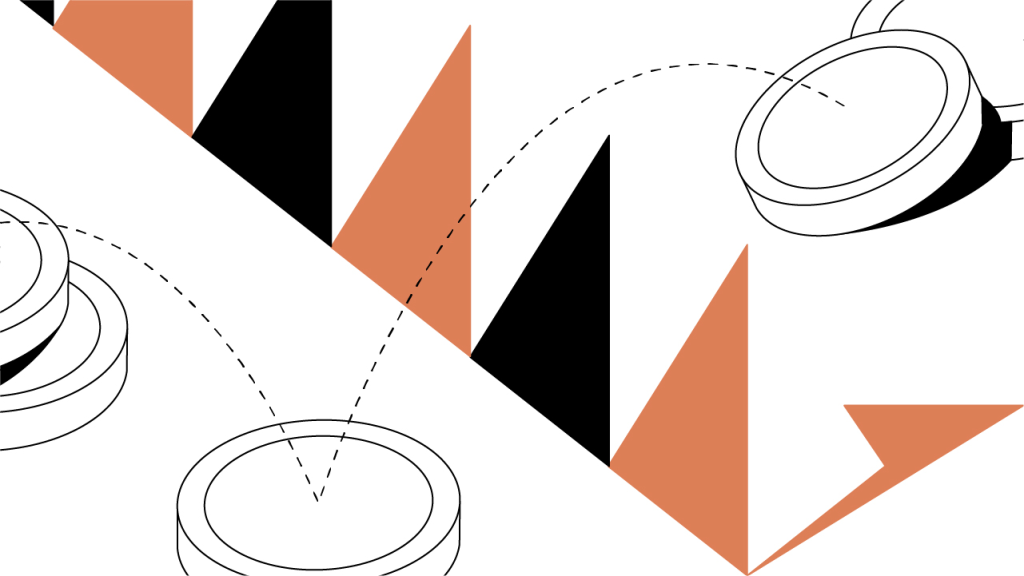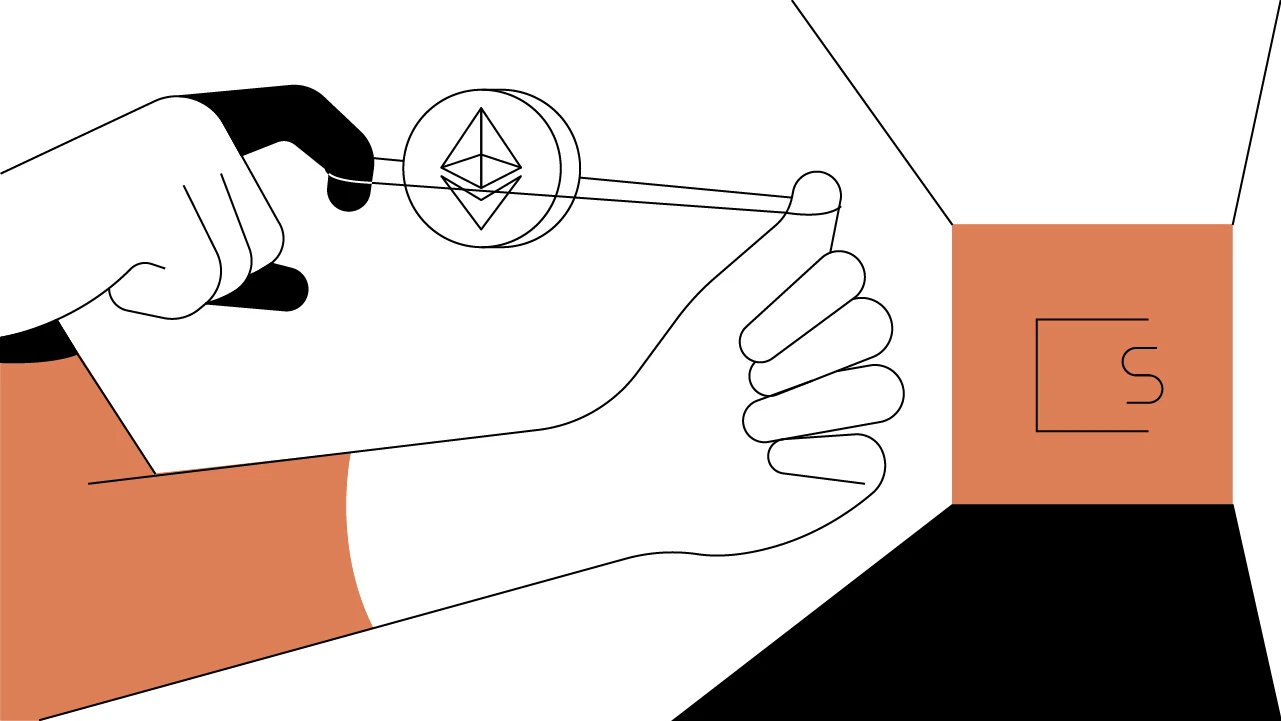Contents
Loopring (LRC): Scaling Decentralized Exchanges with zk-Rollups
Learn how Loopring, an Ethereum Layer-2 scaling protocol, enables high-throughput, low-cost, non-custodial decentralized exchange and payments.
Updated October 15, 2023 • 2 min read

Summary
This article focuses on Loopring, a decentralized exchange (DEX) protocol based on the Ethereum blockchain. We describe how Loopring delivers a non-custodial, high-throughout DEX protocol and platform by deploying innovations like Zero-Knowledge Rollups (zk-Rollups) and on-chain data availability (OCDA). We also discuss how, with order rings and order sharing, Loopring replicates the functionality of a conventional order book to fill market orders in a decentralized framework.
Contents
What Is Loopring?
Loopring is a Layer-2 scaling protocol for decentralized exchanges (DEXs) built on the Ethereum blockchain that can process the settlement of thousands of trades per second. While Loopring technology is usable across DEXs as a protocol layer, the platform also delivers Loopring Exchange, a non-custodial trading platform that offers secure, high-speed trades with no gas fees. Loopring leverages Zero-Knowledge Proofs (ZKPs) — a blockchain innovation that bundles transactions together for efficiency — to allow anyone to build a high-throughput, non-custodial DEX. Loopring also uses its native LCR token to reward Zero-Knowledge Rollup (zk-Rollup) operators and liquidity providers.
Loopring’s Zero-Knowledge Rollups (zk-Rollups)
Many DEXs like Uniswap utilize automated market makers (AMMs) to match buyers and sellers. These AMM protocols execute trades automatically, replacing conventional order books with liquidity pools, which are crowdsourced asset pools used to provide liquidity. In contrast to centralized exchanges (CEXs) that use order books, DEXs tend to feature lower transaction fees and support for more digital assets. However, centralized exchanges still benefit from more robust liquidity and higher throughput speeds than DEXs. Loopring aims to bring the best of centralized exchanges to the decentralized ecosystem by leveraging an advanced innovation in blockchain technology known as zk-Rollups.
A zk-Rollup is a Layer-2 function — meaning that the tech runs atop the main blockchain — that integrates with the Ethereum network to improve scalability. A zk-Rollup can bundle hundreds of transactions together and transform them into a single data-light Zero-Knowledge Proof that is then confirmed in a batch on the Ethereum network. This allows for significantly higher transactional throughput than Ethereum can currently handle alone. The zk-Rollup computation process occurs off-chain, while the data and transactions never leave the Ethereum blockchain. Integrating the zk-Rollup process with DEX protocols allows for much more complex computations, which means optimizations that result in lower transaction fees and significantly improved liquidity.
In the context of the wider Ethereum network, validating a block of transactions is faster and less costly when using zk-Rollups because less data is included, and a smart contract is necessary only to validate the final, light cryptographic proof. These transactions are also written to the Ethereum blockchain as call reference data, which requires significantly less computation than pulling data from the network. By merging all of these functions into a single, open protocol, Loopring is accelerating blockchain technology adoption by increasing efficiency across the entire Ethereum ecosystem.
Loopring Crypto Tech Unboxed: OCDA, Ring Miners, Order Rings, Order Sharing
While zk-Rollups represent the tech that powers Loopring, it’s the implementation of it that renders the multifaceted protocol so useful, particularly via its latest Loopring 3.0 update. Loopring features an on-chain/off-chain switch called OCDA that enables significantly faster transactions in instances where data is available to move off-chain for computation. Loopring also utilizes a high-throughput arbitrage mechanism that uses a system of order rings, order miners, and order sharing to achieve near-instant, internet-scale liquidity.
On-chain data availability (OCDA): The Loopring crypto protocol uses a feature known as on-chain data availability (OCDA). This hybrid approach to data storage allows users to choose whether their data is stored on-chain or off-chain. When the OCDA feature is switched off, data is stored on-chain and the network can achieve 2,025 transactions per second (TPS). However, if OCDA is switched on and data is stored off-chain — by using what it calls Validium mode — then throughput can reach 16,400 TPS. By using Loopring 3.0 innovations like OCDA, non-custodial exchanges may be able to match their centralized, custodial competitors' performance.
Ring miners: Loopring uses a unique consensus protocol that circumvents traditional order books and the AMM mechanisms governing liquidity pools. Instead, network participants called ring miners are responsible for rapidly filling orders before they're executed or canceled. Those who operate as ring miners receive a service fee in the form of LRC tokens — the native token of the Loopring protocol — or a split on the margin of the order amount.
Order rings: When a ring miner completes an order ring, the Loopring smart contract determines how to fill it. If it can execute the order on either side of the trade, the smart contract will execute an atomic swap — a direct transfer from the smart contract to the user's wallet. Order rings also facilitate ring-matching, which is the process of fulfilling orders by stringing them together and settling multiple trades through multiple users. Order rings differentiate the Loopring protocol from other DEXs like Waves, IDEX, and Bancor.
Order sharing: The function of order sharing is also made possible via order rings on the Loopring protocol. In the instance that the Loopring DEX smart contract cannot execute an order in a single trade, order sharing is used to split orders into partial components until the full original order amount is fulfilled. Ring-matching technology aggregates multiple separate orders into a single order ring. Once the Loopring smart contract validates the orders, each party receives the assets in exchange. Orders are run through the order sharing system as part of subsequent order rings until these partial orders are filled completely.
Loopring Tokenomics and Beyond
While the Loopring LCR token has been integrated into the Loopring protocol since inception as a reward for liquidity providers and zk-Rollup operators, the Loopring roadmap calls for an expansion of token utility. Currently, the Loopring team is using the LRC token as a reward to incentivize the continued development of Loopring and the wider Layer-2 ecosystem.
Cryptopedia does not guarantee the reliability of the Site content and shall not be held liable for any errors, omissions, or inaccuracies. The opinions and views expressed in any Cryptopedia article are solely those of the author(s) and do not reflect the opinions of Gemini or its management. The information provided on the Site is for informational purposes only, and it does not constitute an endorsement of any of the products and services discussed or investment, financial, or trading advice. A qualified professional should be consulted prior to making financial decisions. Please visit our Cryptopedia Site Policy to learn more.

Is this article helpful?
 Powered by
Powered by 


